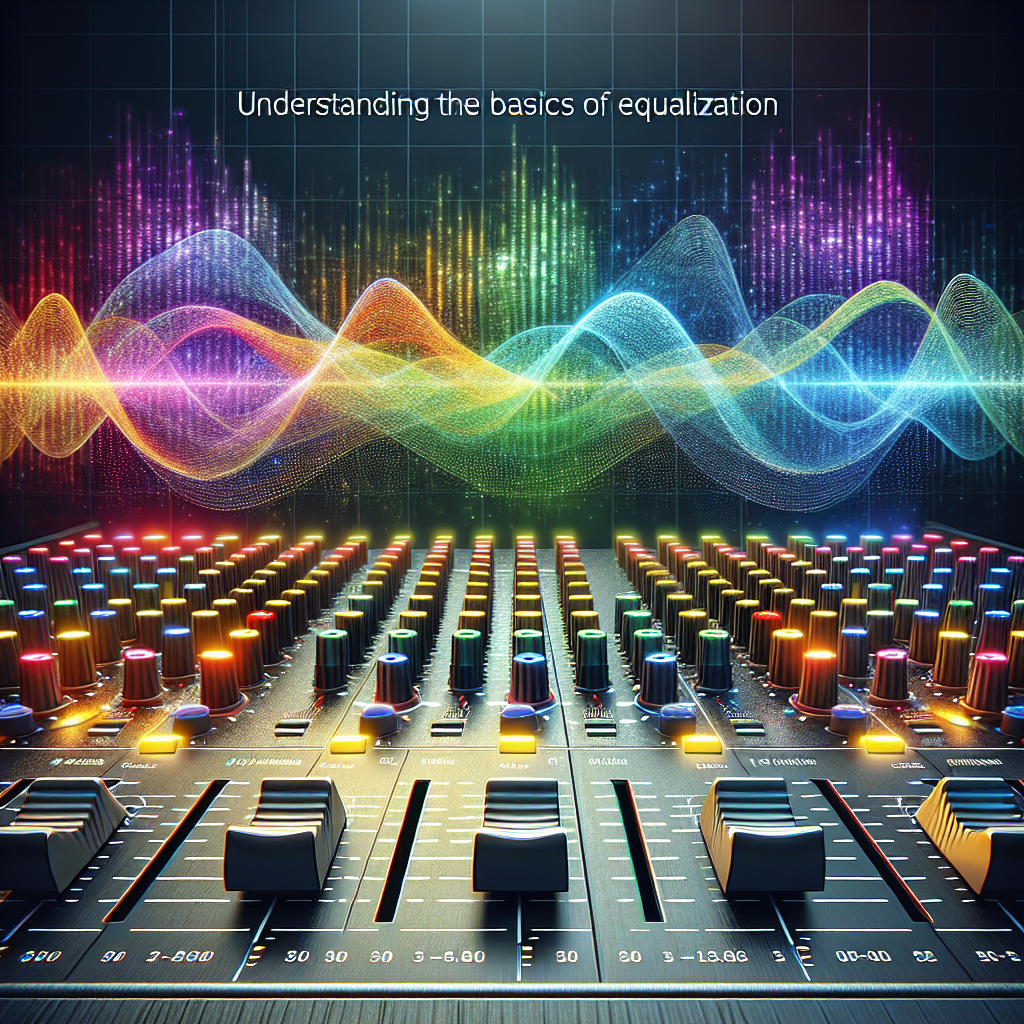Equalization, often referred to as EQ, is an essential part of audio mixing and mastering. It is the process of adjusting the balance of frequency components in an electronic signal. It involves enhancing and balancing the energy of frequencies to produce a cleaner sound that is cold or warm, sharp or soft, distant or close. Simply put, proper EQ can turn a good mix into a great mix. So, let’s delve into understanding the basics of equalization.
What is Equalization?
Equalization is a process used in audio processing to adjust or alter the balance of different frequencies in an audio signal. It can remove unwanted frequencies, promote desirable ones, and create a soundstage around the listener. Equalizers are the devices or software that modify the frequency response of an audio system – they can cut or boost specific ranges of sound frequencies to ensure a smooth and balanced mix.
Type of Equalizers
There are several different types of equalizers, and understanding their differences is crucial to applying equalization correctly. The primary types of equalizers include:
- Graphic Equalizers : Allow users to control the volume of fixed frequency bands.
- Parametric Equalizers: More flexible than graphic equalizers, as the user can control not just volume, but the frequency band and bandwidth as well.
- Shelving Equalizers: Different from the previous two types, as they either boost or cut frequencies above or below a specified cutoff point.
Advantages of Using Equalization
Equalization has several advantages when it comes to audio mixing. Some of the key benefits include:
- Enhance Audio Quality: Equalizers allow you to enhance the audio quality by boosting the desirable frequencies and suppressing the undesirable ones.
- Balanced Sound: They help you create a balanced mix by controlling the sound frequencies that different instruments generate.
- Prevent Audio Clashing: Equalizers can prevent frequencies from clashing, thereby enabling audio components to play harmoniously without overpowering each other.
Implementing Equalization
Understanding the concept of EQ is one thing, but implementing it requires a keen ear and a good understanding of sound frequencies. Here are a few steps you can follow:
- Listen to your mix with a critical ear. Identify any frequencies that appear too loud or too soft in your mix.
- Use an equalizer to boost or cut these frequencies. Remember, subtlety is key – steep or drastic adjustments rarely sound good.
- Always compare your equalized mix with the original. If it sounds better and clearer than the original, then you’ve used the EQ correctly.
Conclusion
In conclusion, understanding and mastering equalization is the key to achieving a perfect audio mix. It enhances the music quality by properly balancing and controlling different sound frequencies. Start by identifying the frequencies that need alterations, use EQ subtly but effectively, and always compare the sounds before and after equalization to ensure it’s sounding better. So, don’t be intimidated. Dive in, experiment, and make those perfect-sounding mixes a reality with EQ.
FAQs
What is the primary purpose of Equalization?
The primary purpose of Equalization is to adjust or alter the balance of different frequencies in an audio signal. This helps in enhancing the quality and balance of the audio.
Can equalization enhance the quality of sound?
Yes, Equalization can significantly enhance the quality of sound. It can boost desirables frequencies and suppress the undesirable ones to improve audio quality.
What are the types of equalizers?
The primary types of equalizers include Graphic Equalizers, Parametric Equalizers, and Shelving Equalizers.
How can equalizers help in creating a balanced mix?
Equalizers help create a balanced mix by controlling the different frequencies that different instruments generate, thus preventing these frequencies from clashing.
Are drastic adjustments to the Equalization recommended?
No, drastic or steep adjustments during Equalization are rarely recommended. Subtlety is key in achieving a perfect mix.

